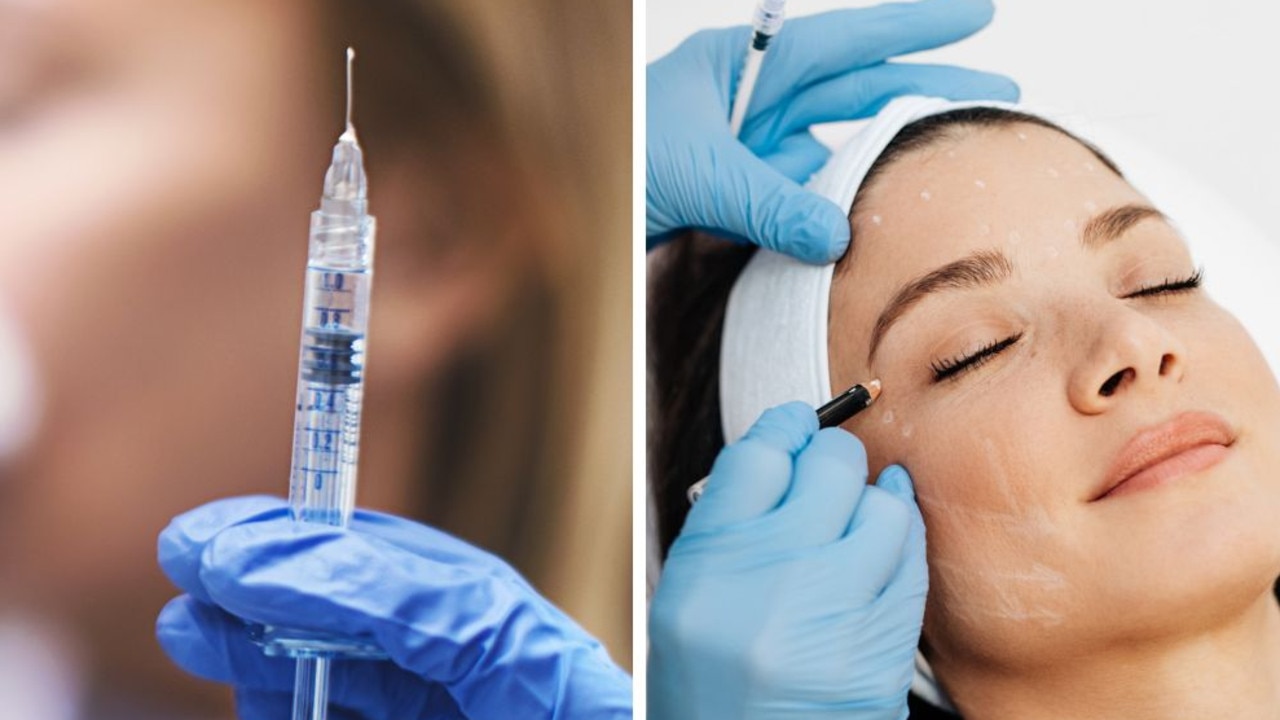Patient advocate claims labiaplasty is dangerous
With labiaplasty procedures on the rise, patient advocate Jessica Pin has made it her mission to protect other women from trauma. Warning: Graphic content
WARNING: Graphic content
Jessica Pin was just 18 years old when she underwent labiaplasty.
She had the procedure performed by an OB/GYN who was highly respected in his field in Texas, US. Yet, she says she was left with her labia minora completely removed, as well as a clitoral hood reduction performed without her consent.
There was nothing abnormal about Jessica’s anatomy, however, she was led to believe it was necessary to have the surgery.
“I was in denial for years, thinking [the loss of feeling] was fixable, or there was some way around it,” Jessica says. “Then I was suicidal for years. Trying to come to terms with it has been very difficult.”
Now a patient’s rights advocate, Pin fears for the growing number of Australian women seeking labiaplasty – a trend that has exploded in recent years.
Since 2019, online searches in Australia for labiaplasty – the process by which the labia minora (inner tissues of the female genitalia) are reduced in size – have grown by 83 per cent. The past 12 months alone have seen 68,000 searches, according to keyword research and data platform SEMrush.

But Pin is vehemently against the procedure unless for pressing medical reasons.
She believes surgeons underplay the risks of the surgery while making claims for which there is little evidence
After her own procedure, she believes the dorsal nerves of her clitoris were severed, permanently erasing sensation.
“Surgeons claim protruding labia are ‘hypertrophic’, which means overdeveloped,” she says, “but it is unreasonable to claim half the population [of women] has an excess of any anatomy, yet this is what they do.” (According to a 2017 Danish study, 56 per cent of women had visible labia minora.)
Jessica believes her operation was botched due to a lack of proper education in the medical field about the proper anatomy of the clitoris, and after looking into the research, discovered there was an absence of proper information about clitoral nerves in almost all medical textbooks in the US.
She says not being believed has caused additional trauma.
“The gaslighting made it much worse,” she says. “For a long time, I was told it was all in my head. Then I was told I was ‘making mountains out of molehills’ and asked why I was so obsessed with sex. I was told to just get over it. I was told that I was ‘normal’. I was told it was my fault.”
She has successfully campaigned for the publishers of nine major OB/GYN anatomy textbooks to include detailed clitoral anatomy, as well as having her own study published in the Aesthetic Surgery Journal, which found the dorsal nerves of the clitoris were larger than expected, and thorough knowledge of these nerves was required before performing surgery near the clitoris.
To women considering the procedure, Jessica has some blunt advice.
“If they need it for medical reasons, make sure only their labia minora are operated on and that not too much is removed,” she says.
“And if they are considering it for cosmetic reasons, I would suggest this is unethical, as they are funding an industry that continues to refuse to exercise a reasonable standard of care. The reason this can go on is because women continue to tolerate it and support it.”

Melbourne woman Kasey* has finally been able to sit down without excruciating pain, eight days since having several parts of her vulva and clitoral hood removed.
“Honestly, it’s not talked about enough at how mentally, emotionally and physically taxing the recovery is,” she says.
“It has been one of the most painful and intense experiences I have ever gone through. I was completely awake during the whole thing, which is crazy because you smell the burning flesh. I really believe surgeons downplay the recovery. They say that most women return to work within two to four days, which is crazy.”
For Kasey, the decision to undergo surgery was based on a crippling fear that her own vagina was “ugly”.
“Since I began puberty at around 12 or 13 I started developing longer labia minora, and when I started comparing my vagina to those I saw in porn, I started feeling really self-conscious and like I wasn’t normal,” she says.
“I never told a soul that I had larger labia because I was honestly so embarrassed and upset by it growing up. I didn’t let my boyfriends or anything growing up look at it or touch it and I refrained from actually having sex until I was 18 in my first serious relationship.
“I have never once had anyone tell me that it was ugly or bad throughout all my relationships and sexual encounters, but in the back of my mind I always thought they would be thinking about how ugly and awful it was.”

Kasey, still in the early recovery stages from her own labiaplasty, says that despite the intense pain of recovery and the $4445 out of pocket she paid for the procedure, she doesn’t regret the surgery – though she is concerned that her surgeon seems to have removed more of her labia minora than she expected.
More Coverage
“The plastic surgeon who did mine actually gave completely different advice and results to other girls I spoke to who went through him. He told them he couldn’t remove all of it because it would interfere with sex, but he didn’t leave anything at all on me. So I’m a bit confused and conflicted because I actually wanted him to leave something, and leave the minora and majora the same size, instead I don’t even think I have any labia minora left,” she says.
“I wish I’d never felt that pressure to have someone cut something off me,” she says. “It isn’t normal or OK for a woman to feel that way, but I think women feel like if they don’t [try to achieve their version of a ‘beautiful’ vulva] they won’t be accepted or loved in the same way.”
* Name has been changed





